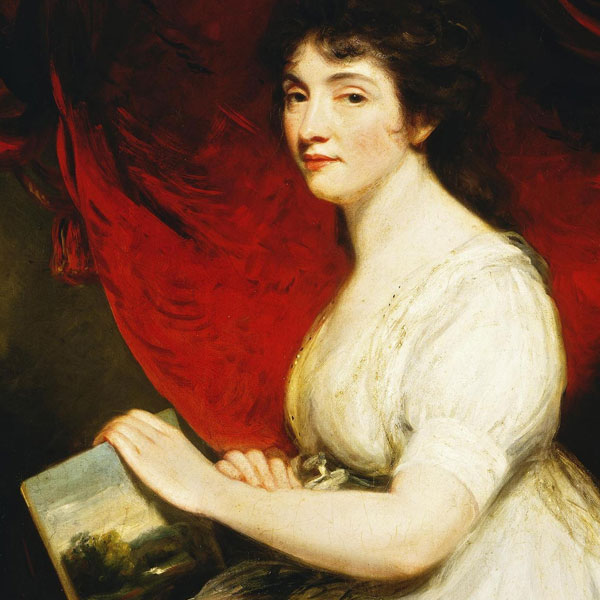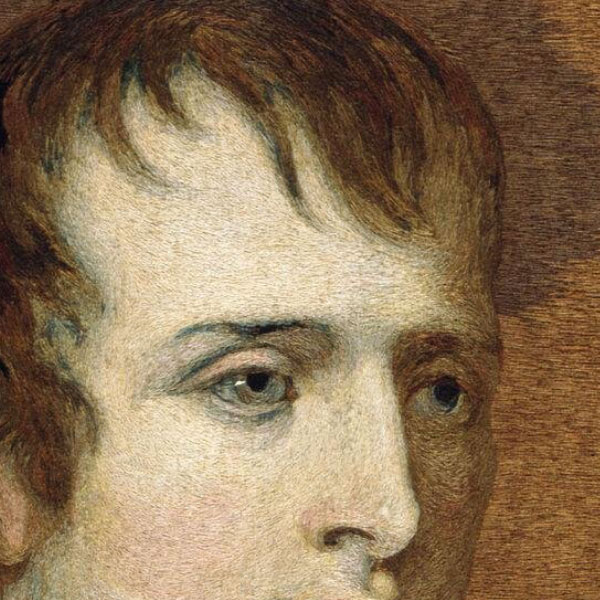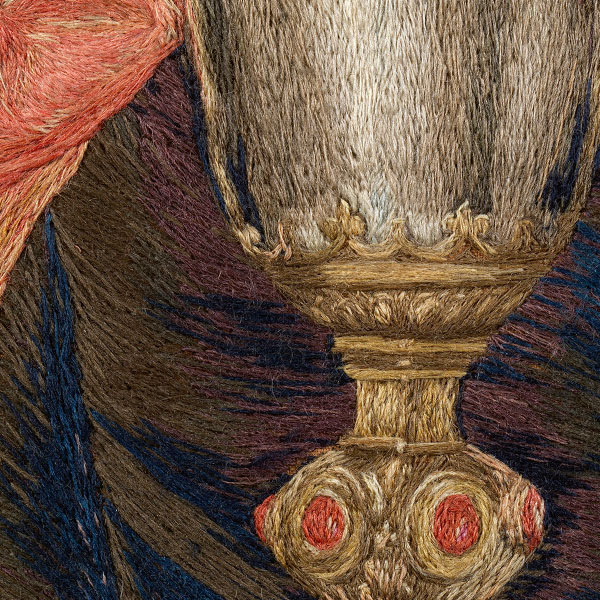Howdy and Happy Monday!
Today, I’m going to send you down a little rabbit hole, thanks to a nudge from my pal Margaret, who dropped me a line about Mary Linwood the other day.

Mary Linwood (1755-1845) was an embroidery artist, school mistress, and entrepreneur – really, a pioneer of embroidery as art. She very successfully exhibited her needlework – which we would call “needle painting” – around the UK and in a gallery in Leicester Square, London, until her death, and her exhibitions drew tens of thousands of people yearly. She was widely popular!
Besides original works, she copied in embroidery the works of great painting masters. She primarily worked with wool, sometimes highlighted with silk to capture light.

Her story demonstrates how embroidery styles wax and wane through the decades.
Because of her use of wool thread, her work fell into disfavor later in the 19th century, garnishing criticism from the movers and shakers in the Arts & Crafts era. She was attributed to influencing the popularity and rise of Berlin wool work (which certainly “cheapened” wool work by prolific commercialization and bad design), and hence, her contributions to the art of needlework were no longer as lauded as they had been earlier in the century.
The irony is that Linwood’s excursions into wool embroidery were nowhere close to the cheapened and gridded designs that took over wool work in the Victorian era and beyond. Canvas work today is much more akin to the type of needlework that caused Linwood to be “snubbed” by later decades of design and needlework artisans.

I’m trying to reconcile a connection between this portrait of Napoleon, embroidered by Linwood, and gridded wool canvas designs. Hard to find any similarity, isn’t it?
But that’s the way trends in every sphere of art weave their way in and out of history.

Certainly, Mary Linwood was a master of needlework. She is considered the greatest needlework artist of her day, with good reason.
One of my favorite examples of her work is Salvator Mundi, after Carlo Dulci. It is stunning. You can see the full image here.
You can find her portrait of Napoleon here on the V & A website.
And here are some good articles that will help you delve further into Mary Linwood’s story:
Number One London – Legacy of Needlework – Mary Linwood
Mary Linwood – Balancing Act
Miss Linwood – Regency Celebrity
Hope you enjoy exploring!




